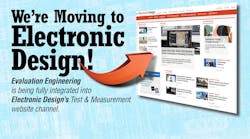The world has arguably been in a period of disruptive growth since the commercialization of solid-state electronics in the 1960s. Once electronics left the realm of vacuum tubes and entered the world of board-level components, things began to change. The ability to cram a circuit into smaller and smaller packages enabled anything powered to become not only intelligent, but connected.
This capability for intelligence and connectivity started then, with simple things like transistor radios, arguably the first community wireless device. Wireless technology was primarily broadcasted information intended for passive consumption, a situation that lasted for about 30 years. Then personal communications technology was developed, and the stage was set for the world we live in today.
The disruptive aspect of technology migration and societal evolution is its most obvious aspect. Old gets replaced by new, or evolves into it. Growth and development is often disorienting and occasionally painful, but results in a more mature organism. The overall movement is one of forward growth and development of better things, no matter how destructive the process may appear at the individual level.
The Perpetual Need to Evaluate
Evaluation engineering as a task has been around since electronics were invented, and will always be. The need to evaluate, qualify, verify, and confirm the performance, functionality, effectiveness, efficiency, and safety of electronic systems and the products and services they create will never go away. The scope and nature of what used to be a bottleneck task in the development process is what is changing.
The role of test and evaluation has grown to the point where it is a fundamental aspect of the electronic design and development process, implemented in a continuous fashion. Where once upon a time testing was done as an isolated step, today test and evaluation has become an awareness of a device from its inception to the day its warranty runs out in the real world. We create a design using simulation software, develop it in an intelligent programming environment, build it in a six-sigma smart facility, and maintain using over-the-air updates in the field.
This expansion of the role of test and evaluation into the electronics design and development process has been a focus of Evaluation Engineering in recent years, as we documented and advocated the growth and development of advanced design methodologies and technologies. This growth and expansion of the mission has resulted in our need to integrate our editorial voice with our bigger sister, Electronic Design. This integration will result in a deeper and broader coverage of test and evaluation in Electronic Design, and expose our content to that publication’s larger audience.
Evaluation Engineering came to being as a brand, logically, around the same time solid-state electronics started to explode into the world. In March 1962, the first issue of EE rolled off the presses with founder Vern Nelson, who studied electronic engineering at Michigan State University, and served in the U.S. Air Force, as its first Publisher and Editor-in-Chief. The first issue was mailed to 10,000 engineers.
At the beginning, EE’s official name was the Magazine of Reliability Engineering. It then became the Electronic Magazine of Reliability Engineering, then the Magazine of Electronic Evaluation. This integration reflects a further definition of the role and identity of the publication. Our goal will continue to be to educate and inform the electronic engineering design and development community to the best of our ability. This integration into ED will enable us to do this to a larger engineering audience.
Keep informed in 2022! Receive a supply of cutting-edge electronic test and measurement articles coming to you, delivered directly to your office or email inbox. To subscribe to the print edition of Electronic Design, fill out the form at https://www.electronicdesign.com/subscribe/print. To receive Electronic Design’s email newsletters, complete the form at https://www.electronicdesign.com/subscribe/newsletter.


